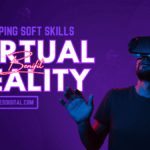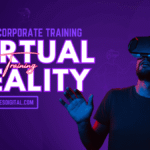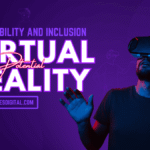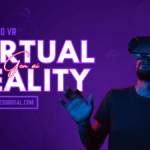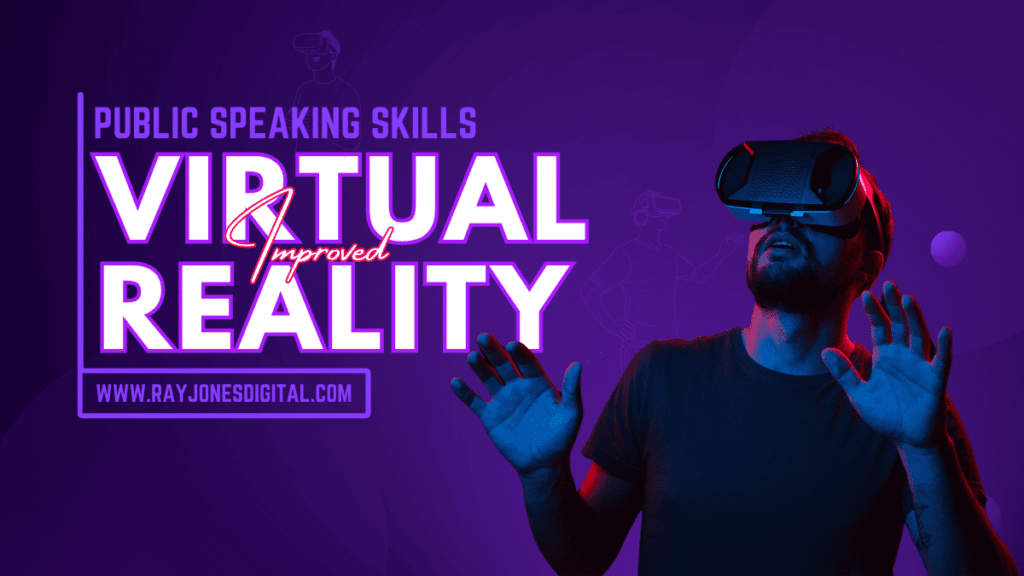
Public speaking ranks among the most common fears, often surpassing worries about death itself. Yet mastering presentation Presentation Skills with VR remains crucial for career advancement and personal growth. Virtual reality is revolutionising how we approach this challenge, offering immersive training environments that were previously impossible to access.
Gone are the days when presentation practice meant rehearsing in front of a mirror or gathering friends for feedback. VR technology creates realistic speaking scenarios where you can hone your skills without the pressure of a live audience. This comprehensive guide explores how virtual reality can transform your presentation abilities and boost your confidence as a speaker.
Why Traditional Presentation Training Falls Short
Most people struggle with presentation skills because traditional practice methods don’t replicate the real experience of speaking to an audience. Reading presentation tips online or watching tutorials provides theoretical knowledge, but it doesn’t address the psychological challenges of standing before a crowd.
Practicing alone in your room lacks the environmental pressures that trigger speaking anxiety. You can’t simulate the feeling of multiple eyes watching you, the acoustics of a large room, or the unpredictable nature of audience reactions. This gap between practice and performance often leads to disappointment when speakers face real audiences.
Professional presentation coaching remains expensive and time-consuming. Many people can’t access quality training due to geographical limitations or scheduling constraints. Even group workshops can’t provide the personalised attention needed to address individual weaknesses.
How VR Recreates Authentic Speaking Environments
Virtual reality bridges the gap between solitary practice and live performance by creating immersive environments that feel remarkably real. When you put on a VR headset, you’re transported into realistic conference rooms, auditoriums, or boardrooms complete with virtual audiences.
These digital environments respond to your movements and voice just like real venues. You can walk around the stage, make eye contact with audience members, and experience the spatial dynamics of different room layouts. The technology tracks your gestures and body language, providing feedback on your physical presence and movement patterns.
Advanced VR systems simulate various lighting conditions, acoustic properties, and room sizes. You might practice in an intimate meeting room with six colleagues or a grand auditorium with hundreds of attendees. This variety helps you adapt your presentation style to different contexts and venues.
Overcoming Speaking Anxiety Through Virtual Practice
The controlled nature of VR environments makes them ideal for addressing presentation anxiety. You can gradually expose yourself to increasingly challenging scenarios without real-world consequences. Start with a small, friendly audience and work your way up to larger, more intimidating crowds.
VR allows you to repeat difficult moments until they become comfortable. Struggling with your opening lines? Practice them dozens of times in the same virtual environment until they feel natural. This repetition builds muscle memory and reduces the cognitive load during actual presentations.
The technology also lets you experiment with different approaches without embarrassment. Try bold gestures, vary your vocal delivery, or test unconventional presentation structures. This experimentation helps you discover your authentic presenting style in a judgment-free environment.
Personalised Feedback and Performance Analytics
Modern VR presentation platforms provide detailed analytics about your performance. Eye-tracking technology shows where you’re looking during your presentation, highlighting whether you’re making sufficient eye contact with your audience. This objective feedback helps identify blind spots that might go unnoticed in traditional practice.
Voice analysis features monitor your pace, volume, and vocal variety. The system can identify moments when you speak too quickly due to nervousness or when your volume drops below optimal levels. Some platforms even detect filler words like “um” and “uh,” helping you reduce these speaking crutches.
Gesture tracking provides insights into your body language and movement patterns. You might discover that you’re swaying unconsciously or that your hand movements are distracting. This awareness allows you to refine your physical presence and project greater confidence.
Realistic Audience Interactions and Scenarios
VR platforms create virtual audiences that react authentically to your presentation. These digital attendees might nod in agreement, look confused during complex explanations, or appear bored if your energy drops. These reactions help you gauge your effectiveness and adjust your approach accordingly.
Some systems include interactive elements where virtual audience members ask questions or provide feedback. This functionality prepares you for the unpredictable nature of real Q&A sessions. You can practice handling difficult questions, managing time constraints, and maintaining composure under pressure.
The technology can simulate various audience types and contexts. Practice pitching to venture capitalists, presenting to academic conferences, or delivering team updates to colleagues. Each scenario requires different approaches and communication styles, helping you develop versatility as a speaker.
Building Confidence Through Repetition and Mastery
The unlimited practice opportunities in VR environments build confidence through repetition and gradual improvement. Unlike real-world practice, you can repeat sections of your presentation immediately without scheduling delays or audience fatigue.
This repetitive practice creates positive associations with speaking situations. Instead of dreading presentations, you begin to feel comfortable and prepared. The familiarity gained through VR practice translates directly to improved performance in real-world scenarios.
The controlled environment also allows you to practice recovery techniques. Deliberately make mistakes during virtual presentations to rehearse how you’ll handle forgotten lines, technical difficulties, or unexpected interruptions. This preparation reduces anxiety by building confidence in your ability to adapt.
Developing Advanced Presentation Techniques
VR training goes beyond basic presentation skills to develop advanced techniques that separate exceptional speakers from adequate ones. Practice using the entire stage space effectively, incorporating multimedia elements seamlessly, and managing complex presentation technologies.
The technology allows you to experiment with different presentation styles and formats. Try storytelling approaches, interactive demonstrations, or multimedia-rich presentations. This experimentation helps you discover what works best for your content and personal style.
Advanced VR systems can simulate technical challenges like microphone failures, projector problems, or lighting issues. Practicing these scenarios builds resilience and helps you maintain professionalism when unexpected problems arise during real presentations.
Accessibility and Convenience Benefits
VR presentation training offers unprecedented accessibility for skill development. You can practice anywhere with a VR headset, eliminating geographical barriers to quality training. This flexibility is particularly valuable for remote workers or those in areas with limited training resources.
The technology accommodates different learning styles and paces. Visual learners benefit from seeing their performance analytics, while kinesthetic learners engage with the physical aspects of virtual presenting. You can progress at your own speed without pressure from other participants.
Time constraints that limit traditional training opportunities disappear with VR. Practice for ten minutes between meetings or conduct extended sessions when your schedule allows. This flexibility makes consistent skill development more achievable for busy professionals.
Measuring Progress and Setting Goals
VR platforms provide objective metrics that make progress tracking straightforward. Compare your eye contact percentages, gesture frequency, and vocal variety across multiple sessions. These quantitative measures supplement subjective feelings about improvement.
Set specific, measurable goals for your presentation skills. Aim to maintain eye contact with your audience for 80% of your presentation time, reduce filler words to fewer than five per minute, or increase your vocal variety score by 20%. These concrete targets make improvement more focused and motivating.
Regular progress assessments help identify areas needing additional attention. You might excel at content delivery but struggle with audience engagement, or demonstrate strong vocal skills while needing work on body language. This targeted feedback accelerates your development.
Integration with Real-World Practice
VR training complements rather than replaces traditional presentation practice. Use virtual environments to build fundamental skills and confidence, then apply these abilities in real-world situations. The combination creates a comprehensive development approach.
Transfer the techniques mastered in VR to actual presentations. The muscle memory developed through virtual practice translates directly to real-world performance. Many speakers report that real audiences feel less intimidating after extensive VR training.
Continue using VR for ongoing skill maintenance and preparation for specific presentations. Rehearse important speeches in virtual environments that match your actual venue, complete with similar lighting and room layout. This targeted preparation maximises your performance potential.
Choosing the Right VR Presentation Platform
Several VR platforms specialise in presentation training, each offering different features and capabilities. Research options based on your specific needs, budget, and available hardware. Some platforms focus on basic skills while others provide advanced analytics and coaching features.
Consider the realism of virtual environments when selecting a platform. Higher-quality graphics and more responsive audience interactions create more effective training experiences. However, balance these features against cost and system requirements.
Look for platforms that offer diverse scenarios and audience types relevant to your speaking contexts. Business professionals might prioritise boardroom scenarios, while educators need classroom environments. Choose systems that match your specific presentation requirements.
Maximising Your VR Training Investment
Develop a structured training plan that progresses systematically through different skills and scenarios. Start with basic presentations in comfortable environments before advancing to challenging situations. This graduated approach builds confidence while developing competence.
Combine VR training with traditional presentation education. Read books about public speaking, watch expert presentations, and study successful speakers. Apply these insights during your virtual practice sessions for maximum learning effectiveness.
Track your progress consistently and adjust your training focus based on results. If vocal variety improves quickly but gesture control lags behind, allocate more virtual practice time to body language development. This targeted approach accelerates overall improvement.
The Future of Presentation Training
Virtual reality represents the future of presentation skills development. As technology improves and costs decrease, VR training will become increasingly accessible and effective. Early adopters gain significant advantages by developing these skills before widespread adoption.
The integration of artificial intelligence with VR platforms will create even more sophisticated training experiences. AI coaches could provide real-time feedback, suggest improvements, and adapt scenarios to your specific development needs. These advances will make presentation training more personalised and effective.
Embracing Your Speaking Potential
Virtual reality removes the traditional barriers to presentation skills development. No longer do geographical location, scheduling constraints, or practice partner availability limit your improvement potential. The technology democratises access to high-quality presentation training.
The confidence gained through VR practice extends beyond formal presentations. Improved speaking skills enhance job interviews, team meetings, and social interactions. These benefits compound over time, creating lasting personal and professional advantages.
Start exploring VR presentation training today. Many platforms offer free trials or basic packages that demonstrate the technology’s potential. Even limited exposure to virtual presenting environments can provide valuable insights into your current abilities and improvement opportunities.
Your presentation skills directly impact your career trajectory and personal effectiveness. Virtual reality provides the tools to develop these crucial abilities efficiently and effectively. The investment in VR training pays dividends throughout your professional life, opening doors to opportunities that strong presenters consistently access.

I am Ray Jones Digital
My current occupations: a Digital Marketer, Local SEO expert, Link Builder, and WordPress SEO specialist. Shopify SEO, Ecommerce Store Management, and HTML & WordPress Developer I have been practicing the above mentioned services for more than 10 years now As an SEO expert working with your ongoing projects.
